Scientist of the Day - Albrecht Dürer
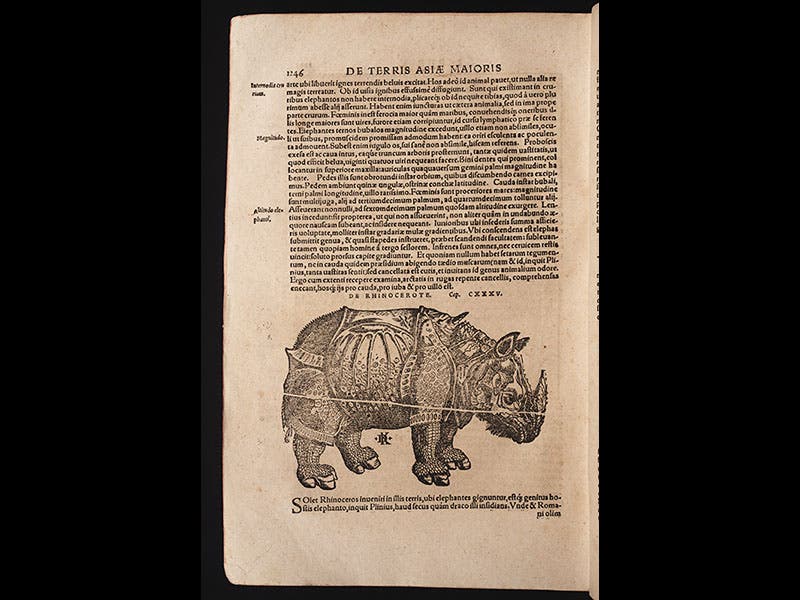
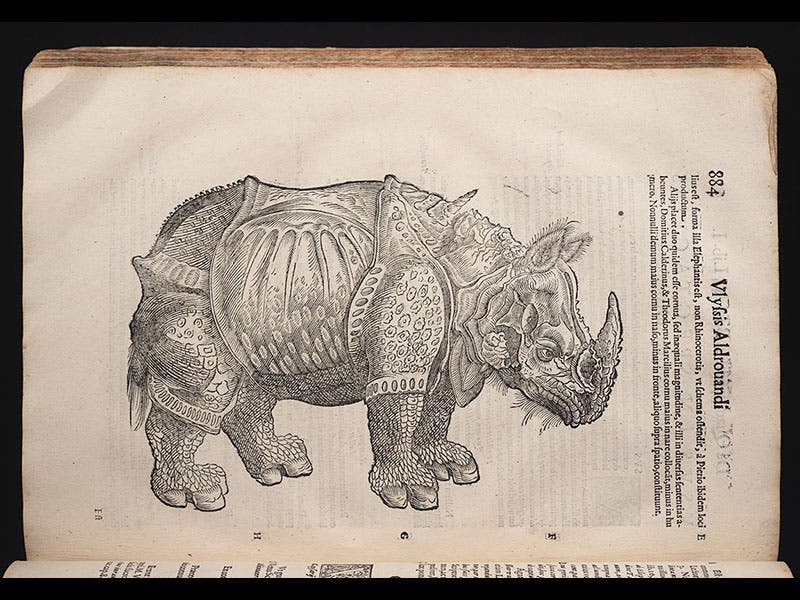
Albrecht Dürer, a German artist and engraver, died Apr. 6, 1528, at age 56. Dürer was one of the most accomplished artists of the Northern Renaissance, and he is known for his fine engravings of Saint Jerome; Knight, Death, and the Devil; and Desiderius Erasmus. Today we feature his most influential natural history print, his Rhinoceros woodcut of 1515. An Indian rhinoceros had been gifted to the King of Portugal by Goa in India. Upon its arrival in Lisbon, sketches were made, and one of these found its way to Nuremberg, where it was seen by Dürer and turned into a more finished drawing (first image), and then into a memorable woodcut (second image). This rhino, wearing what seems to be a coat of armor, became the standard for all images of the beast until another one reached Europe in the 18th century.
We have four of these copies, all woodcuts, in our History of Science Collection: in the Latin edition of Conrad Gesner's History of Animals (1551; third image) and in the German edition of 1563 (fourth image); in Sebastian Münster’s' Cosmography (1572; fifth image); and in Ulisse Aldrovandi's History of Cloven-hoofed Quadrupeds (1621; sixth image). Munster's Cosmography (first edition, 1544) was reprinted so often that the woodblock cracked. The crack has grown quite visible in our edition; later on, the block split completely in two and was glued back together again, but slightly out of alignment, so that the crack disappeared, but the animal was now slightly out of sorts.
Dr. William B. Ashworth, Jr., Consultant for the History of Science, Linda Hall Library and Associate Professor, Department of History, University of Missouri-Kansas City. Comments or corrections are welcome; please direct to ashworthw@umkc.edu.

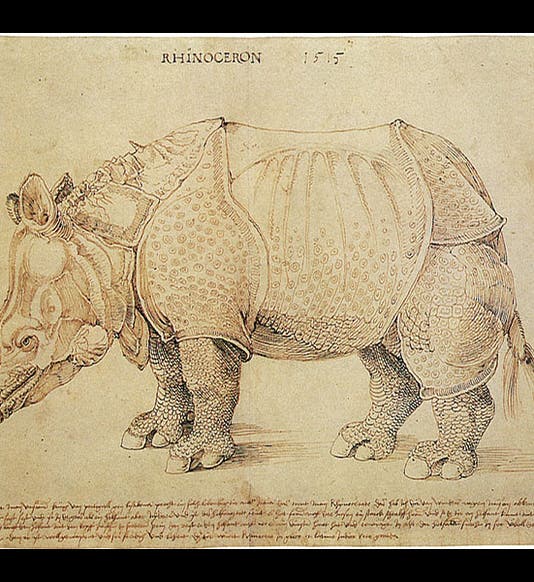
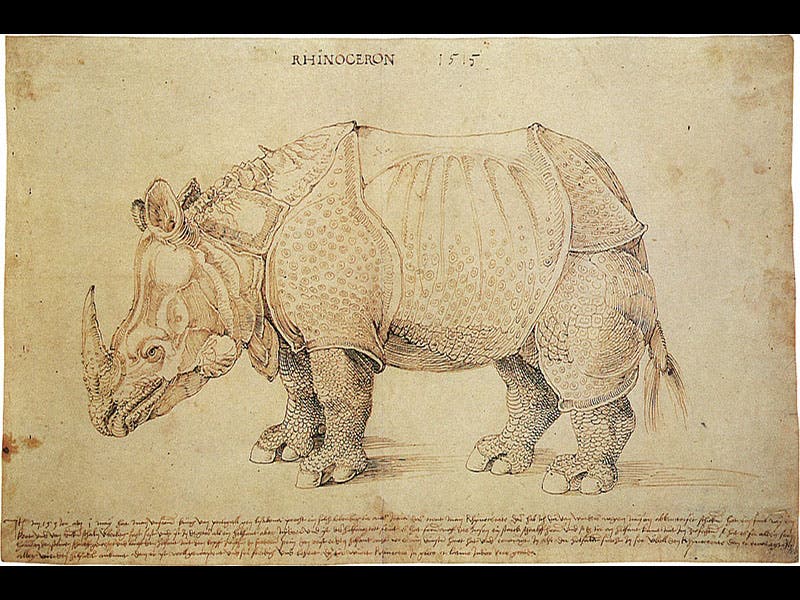
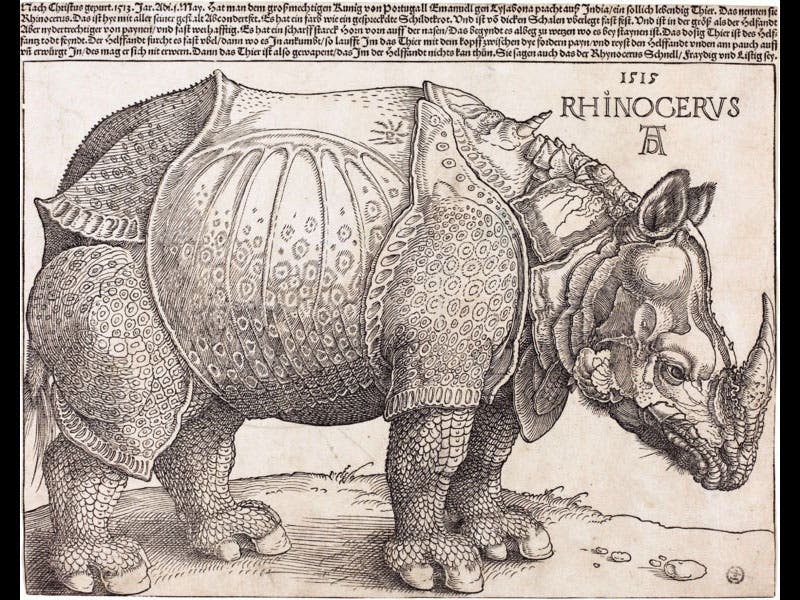
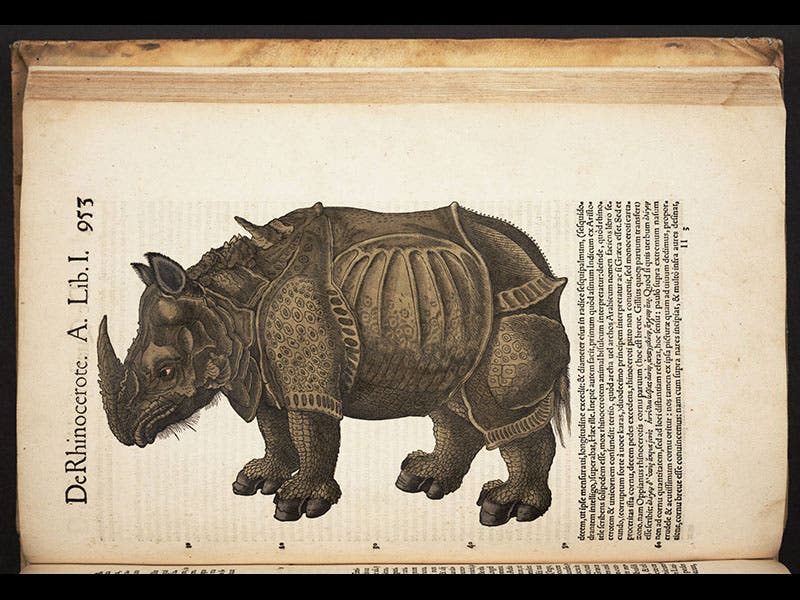
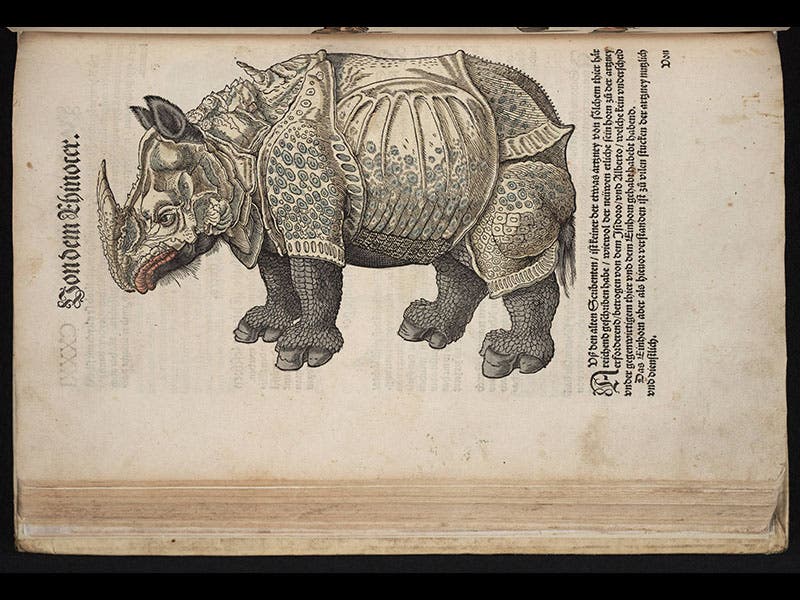


![Using an astrolabe to measure the depth of a well, woodcut in Elucidatio fabricae vsusq[ue] astrolabii, by Johannes Stöffler, 1513 (Linda Hall Library)](https://preview-assets-us-01.kc-usercontent.com:443/9dd25524-761a-000d-d79f-86a5086d4774/a998eb50-55d2-4a88-ace2-a50aa5fa86e7/Stoffler%201.jpg?w=210&h=210&auto=format&fit=crop)

